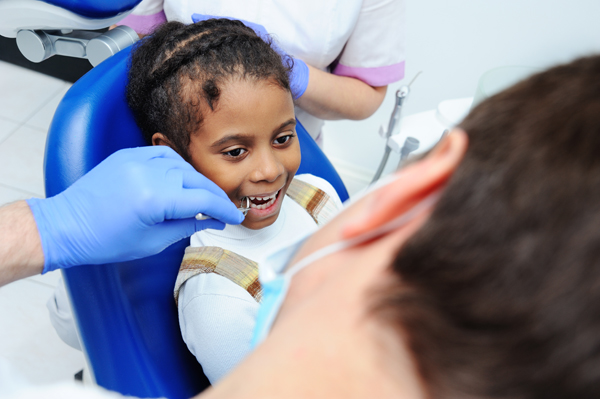What Happens During a Pulpotomy?

A pulpotomy is a common procedure used in pediatric dentistry. This treatment can help save a primary tooth affected by tooth decay, injury, or trauma. Understanding what happens during a pulpotomy allows children and their caregivers to feel more at ease before, during, and after the procedure.
Understanding pulpotomies
A pulpotomy involves the removal of the diseased or inflamed portion of the pulp tissue located in the crown of the tooth, while the healthy pulp in the root canals is left intact. The dental pulp contains nerves, blood vessels, and connective tissue. When decay or infection reaches the pulp chamber, it can cause pain and lead to further complications if left untreated, including infection and tooth loss.
Pulpotomies are often performed on primary (baby) teeth to maintain the tooth's function until it falls out naturally. The dentist can also perform the procedure on permanent teeth with new roots, allowing them to continue developing.
Benefits of a pulpotomy
A pulpotomy offers several advantages. These benefits include:
- Preserves the natural tooth structure
- Continues root development in pre-erupted permanent teeth
- Prevents premature tooth loss and misalignments
- Quick procedure that can be done in a single visit
- Immediately alleviates pain caused by inflamed or damaged pulp
By maintaining the health of the remaining tissue in the inner part of the tooth, a pulpotomy supports the child's long-term oral health and function.
When a pulpotomy may not be recommended
While a pulpotomy is effective in many situations, certain conditions can compromise its long-term effectiveness. For example, if the infection has spread to the root pulp or surrounding bone tissue, the pediatric dentist may not recommend a pulpotomy. They will also not recommend the treatment if there are areas where the dental team cannot control bleeding during treatment. In these cases, the pediatric dentist may recommend alternative treatments, including pulpectomy or extraction.
Step-by-step overview of the procedure
The pulpotomy process follows a series of precise steps to ensure both its effectiveness and safety.
Numbing the treatment area
Before the procedure begins, the pediatric dental team will administer local anesthesia to numb the treatment area. Local anesthesia can help ensure the young patient's comfort and keep them calm throughout the procedure. They may still feel pressure in the affected tooth, but they should not experience sharp pain or discomfort.
Isolating the treatment area
The dental team will place a rubber dam around the tooth to keep it dry and free from saliva or bacteria. This isolation helps the dentist maintain a clean working area and prevent potential contamination. It also improves the patient's comfort by minimizing exposure of other areas in their mouth to dental materials and tools.
Accessing the pulp and removing decay
The dentist removes any decayed portions of the tooth using a dental handpiece. Once decay is eliminated, the dentist will carefully access the pulp chamber in the crown. Then, they will remove the diseased coronal (crown) pulp tissue with specialized instruments. The goal is to leave the radicular (root) pulp intact.
Controlling bleeding
After removing the coronal pulp, the dental team will irrigate the area to prevent infection. They will apply gentle pressure to control bleeding. Successful bleeding control is a positive sign that the remaining pulp tissue is healthy and free of infection.
Placing the medication
The dentist will apply a medication, such as formocresol, ferric sulfate, or mineral trioxide aggregate (MTA), to the stump of the pulp. This medication helps disinfect the area and can aid in keeping the remaining pulp tissue healthy and free from infection.
Sealing the tooth
Finally, the dental team will place a base material over the medication to seal the pulp chamber. Then, they will restore the tooth, typically with a kid-friendly stainless steel crown in primary teeth. This crown protects the primary tooth from further damage and restores oral function.
How to help children recover after a pulpotomy
Recovery following a pulpotomy is generally straightforward. The child may experience mild discomfort once the anesthesia wears off. However, parents can usually help them manage this with kid-friendly over-the-counter pain medication. It is essential for caregivers to instruct their child to avoid chewing on hard or sticky foods in the treatment area until it has fully healed. Additionally, regular checkups and follow-up visits with the pediatric dentist allow the dental professional to monitor healing and ensure that no further issues develop. In most cases, the treated primary tooth will remain functional until it falls out naturally.
Learn more at our Houston pediatric dental office
A pulpotomy is a dental procedure that treats infection or inflammation in the tooth's inner parts, maintaining your child's oral health and preventing premature tooth loss. Do you have further questions about this procedure? Call our Houston pediatric dental office to learn more about pulpotomies or to schedule a consultation.
Request an appointment here: https://www.memorialpediatricdds.com or call Memorial Pediatric Dentistry at (281) 822-6600 for an appointment in our Houston office.
Check out what others are saying about our dental services on Yelp: Root Canal Treatment in Houston, TX.
Recent Posts
A baby root canal is a restorative treatment that pediatric dentists use to save a primary tooth from severe decay or infection. While many parents are surprised that their little one needs a root canal, this procedure preserves the primary tooth. It also prevents further issues with a child's oral health and overall development associated…
When you have little children, trips to the emergency room are common because their immune systems are not as developed, making them more susceptible to diseases, and the same applies to their oral care — especially if your child’s teeth are still growing — which means you should have an emergency pediatric dentist on speed…
Do you want some more information on the side effects of teeth grinding?If you suffer from teeth grinding, also known as teeth clenching and bruxism, then you need to learn more about the harmful effects of this condition. It is especially true if you think you are now starting to experience some of the many…
Wondering when a child should have their first pediatric dental checkup? Read on to learn more. Parents should prioritize their child's dental health. A part of that process is learning about the pediatric dental checkup and when to plan the child's first appointment. If your child is visiting the dentist for the first time, they…


